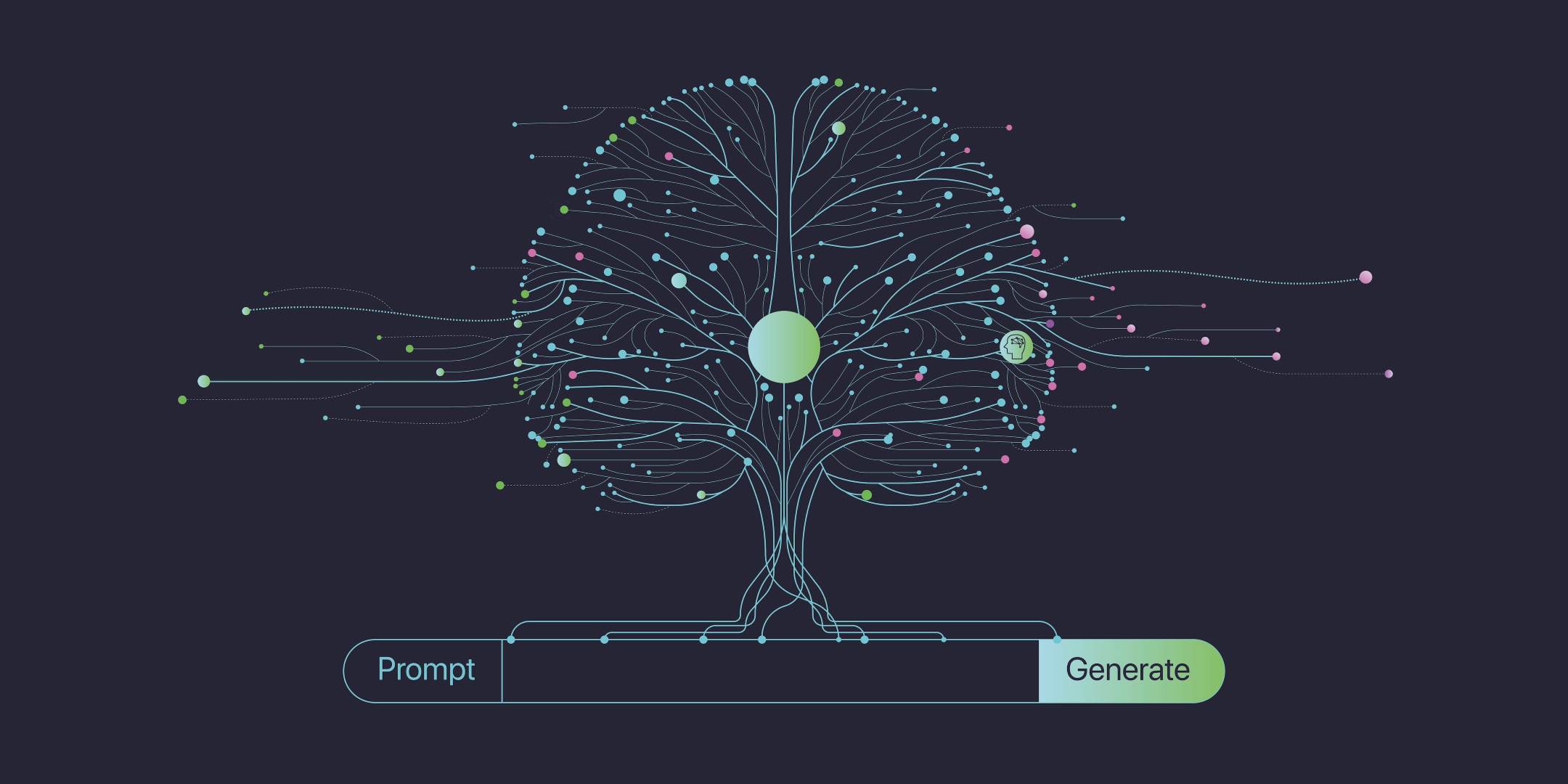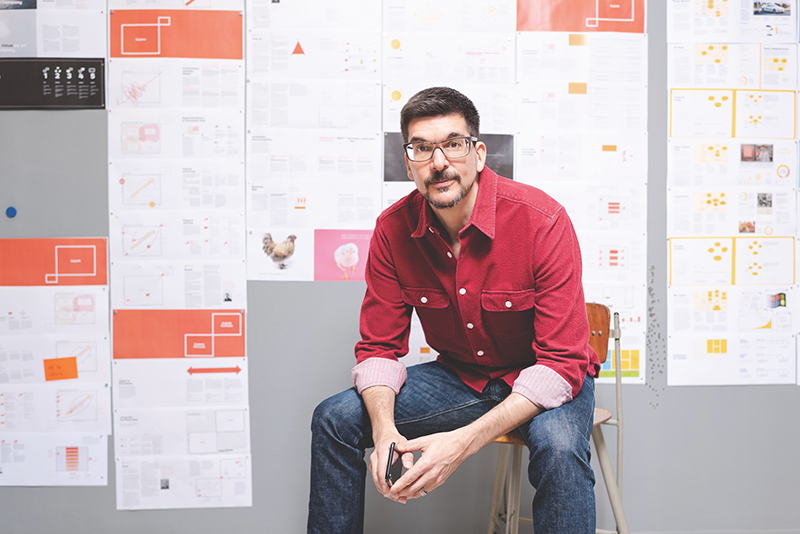Generative AI can amplify human creativity – or stifle it.
Creativity has long been seen in terms of a spark of genius – the unexpected Eureka moment that occurs to gifted humans and enables them to create something unique and valuable. Today, with the rise of Generative Artificial Intelligence, everyone seems to have creative potential at their fingertips. However, the most effective way to harness this new technology for innovation remains an open question – and a topic of ongoing scientific debate.
Gen AI can exhibit remarkable creativity, whether it is producing text, images or other content from scratch. Take Suno, which composes songs from users’ text descriptions; OpenAI’s image generator Dall-E, which produced innovative designs of avocado armchairs even in its early days; and Ai-Da, an AI-powered robot whose painting ‘A.I. God: Portrait of Alan Turing’, sold for over $1 million at Sotheby’s. No wonder companies increasingly recognize the value of Gen AI innovation. For example, Audi has utilized Gen AI to develop new wheel rim designs. Coca-Cola employed AI to create the recipe for its Y3000 soft drink. Nike used image generation AI to assist designers in conceptualizing new sneakers. Furthermore, established tech and digital companies are integrating AI tools to aid creative content generation – TikTok’s Creative Center features an AI assistant to help creators develop new content for the platform.
Gen AI along the innovation journey
The advantage of Gen AI is that, today, anyone can generate content and ideas at the push of a button, with no technical skills required. Gen AI enhances creativity throughout the innovation process, from generating initial ideas, to developing and refining them and ultimately evaluating and selecting the best concepts.
During brainstorming, creators often face a mental block that stalls momentum and restricts their ability to explore and generate new ideas. Gen AI eliminates this ‘blank page’ problem by quickly producing high-quality ideas on demand, offering a springboard for inspiration and further development.
However, creators with promising ideas may struggle to build on them and turn raw concepts into truly innovative, well-rounded solutions. Research indicates that creators often choose the path of least resistance, halting after producing a few ideas – often due to low motivation, insufficient feedback, or uncertainty about an idea’s potential. At this stage, Gen AI can serve as a sparring partner, maintaining motivation and alleviating uncertainty by providing personalized feedback. It can also help envision idea implementation by offering prototypes.
The final stage of innovation involves evaluating and selecting the most promising ideas. Companies typically pursue one or two, yet managers and creators often struggle to compare options effectively, especially when faced with many ideas. Here, AI can help by structuring, grouping, and summarizing ideas – making it easier for creators and managers to navigate a flood of options without feeling overwhelmed.
When inspiration becomes limitation
While co-creating with Gen AI has the potential to stimulate humans throughout the innovation process, there are potential pitfalls, too – including the possibility of exacerbating human biases.
One key challenge in working with Gen AI, for example, is the tendency to get stuck on initial ideas. When individuals are presented with good ideas generated by others, they often have difficulty detaching from them and generating new, original ones. For instance, after seeing an avocado armchair, people may continue to follow the theme of combining fruits and furniture.
Gen AI can amplify this effect by producing well-formulated but conventional ideas, making it harder for creators to push beyond them. Recent research has shown that top human creators outperform Gen AI in generating radically novel and unique concepts. So, even though AI supports creativity, it can, in fact, over time, direct users toward average ideas.
Cognitive overload and overreliance on AI
There is another problem to confront. Nobel Prize winner Linus Pauling famously stated that “The best way to have a good idea is to have lots of ideas” – yet an abundance of ideas can result in cognitive overload, with the brain receiving more information than it can handle. This can cause detachment from the task at hand and decrease motivation. To manage this overload, people may turn to heuristics (mental shortcuts), relying on easy-to-digest, readily-available information.
Because AI generates multiple ideas in the blink of an eye, creators could overvalue surface-level cues as they evaluate the options – such as clarity, source credibility, or similarity to past successes. They may dismiss more novel, risky, or complex ideas too early.
Another pitfall is an overreliance driven by Gen AI’s immediate availability. Creators could become overly dependent on AI-based ideas or feedback and overlook their own high-potential ideas. Less motivated or less experienced creators may also fail to critically evaluate well-formulated AI ideas. Accordingly, the innovation process risks becoming superficial, guided more by algorithmic output than human judgment or exploration.
Where do we go from here?
To fully harness Gen AI’s potential for innovation, we must understand its strengths – and limitations – and actively shape our collaboration with it accordingly. Instead of replacing human creativity, Gen AI should be viewed as a partner that can enhance human imagination when utilized thoughtfully. Companies should always consider the human aspect, not just the technological one.
One effective strategy is to provide meaningful guidance on using AI. This might involve balancing the number of ideas an AI system generates in the early stages of innovation, so as to prevent cognitive overload or being limited by AI-generated initial ideas. Furthermore, companies should cultivate employees’ AI literacy, enabling them to fully comprehend the opportunities and limitations of AI systems, especially regarding AI’s inability to generate radically novel ideas. Finally, companies should actively establish guidelines for the use of AI, including defining clear boundaries for AI involvement and promoting a culture where questioning and collaborating with AI is not only permitted, but encouraged.
Ultimately, the future of creativity is not about humans versus machines, but about how we navigate the complex dynamics of creating with machines. The real challenge lies in striking the right balance between inspiration and autonomy – because Gen AI will either propel us toward breakthrough innovation or quietly limit what we dare to imagine.



